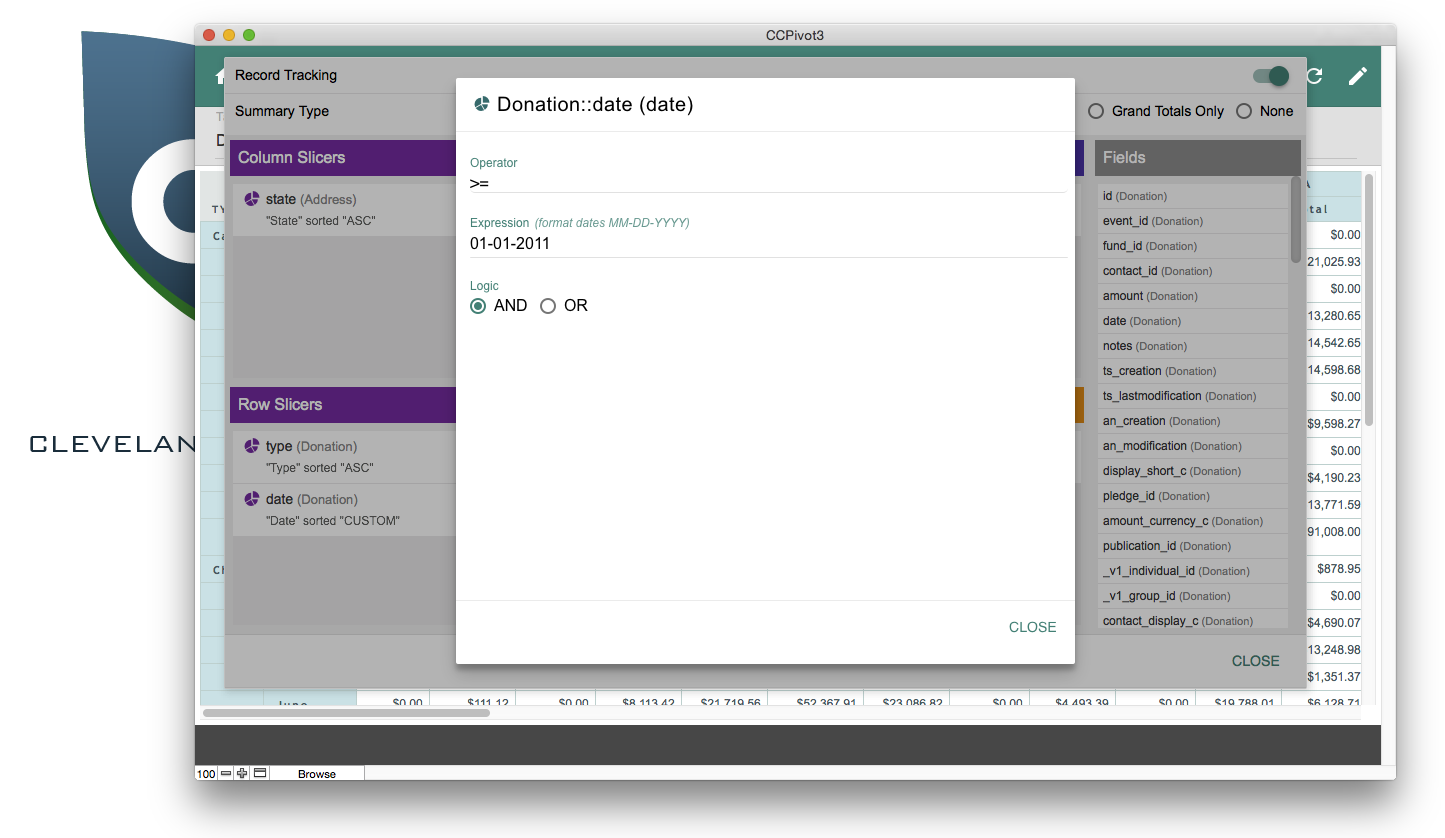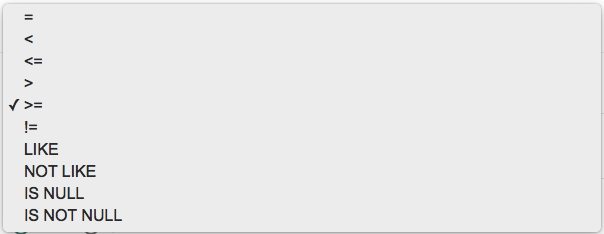¶ Filter Detail Section
Once you have placed a field in the data areas and clicked it in the window below, the data detail window will pop-up. Below is the screenshot, and below it, each option is explained in detail.

¶ Explaining the Options when Editing a Filter Field in CCPivot3
There are three main setting on the data detail screen, and while we go through them in a semi-orderly fashion, they can generally be edited or entered in any order.
Also, while not an editable area, at the top is the name of the field used in the slicer.
¶ Operator
This is a dropdown where you can select from any of the below options:

These are standard SQL operators and behave exactly as they would is a SQL statement. Tutorials Point has a good explanation of them is you need a refresher.
The operator is the relationship the expression will have to your data. This uses standard SQL matching so you have the standard options like "=" or "≥" and whatnot. but you also have options such as "Like". A full list of the operators is:
=, >, >=, <, <=, <>, LIKE, NOT LIKE, IS NULL, IS NOT NULL
¶ Expression
Expression is similar to the find criteria in FileMaker. If you choose "=" as the operator and then "20" for the expression, CCPivot will find all records where the data in your selected field is 20. Remember field types matter, and SQL is user to perform the find on your data so SQL matching rules apply. The part of the SQL query being built here is the "where" section.
For "IS NULL" and "IS NOT NULL" the expression is ignored.
If you need help understanding how the "where" part of a SQL query works there is a pretty good reference here:
https://www.w3schools.com/sql/sql_where.asp
¶ Logic
Logic makes it so you can choose to have your filter criteria function like nested finds of a sort. All the "And" criterial will be grouped together, then all the "Or" criterial will be applied in their own "finds".